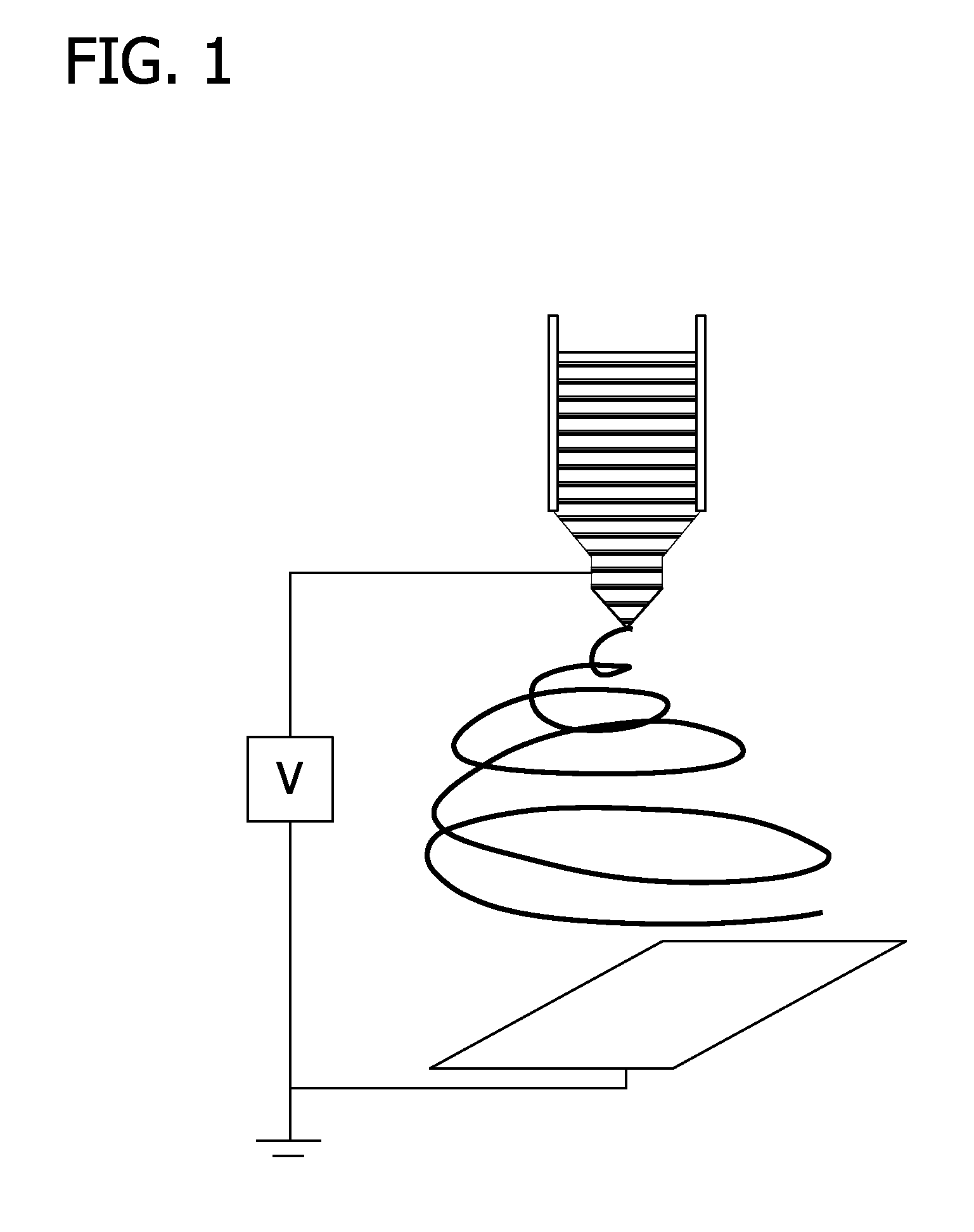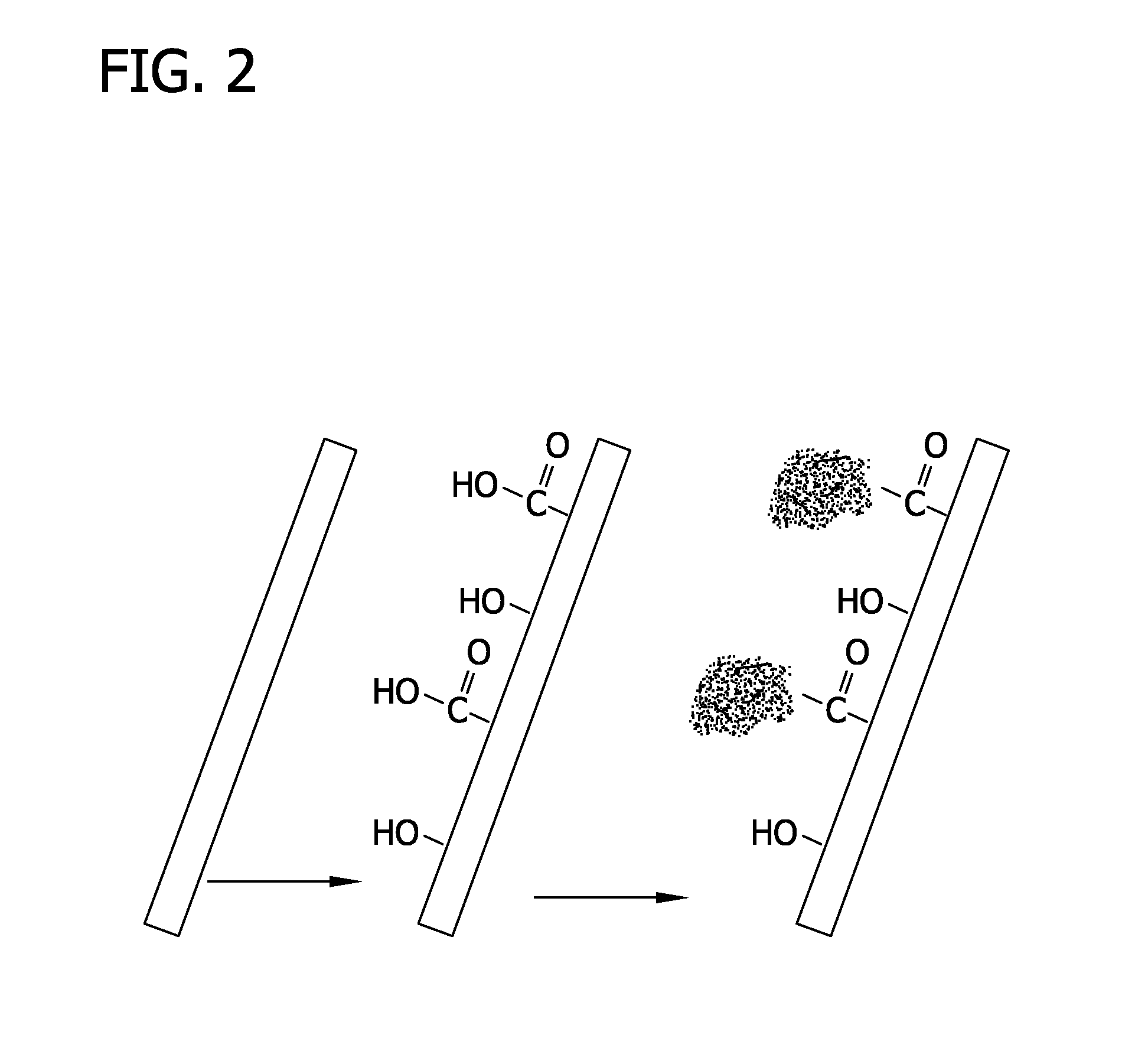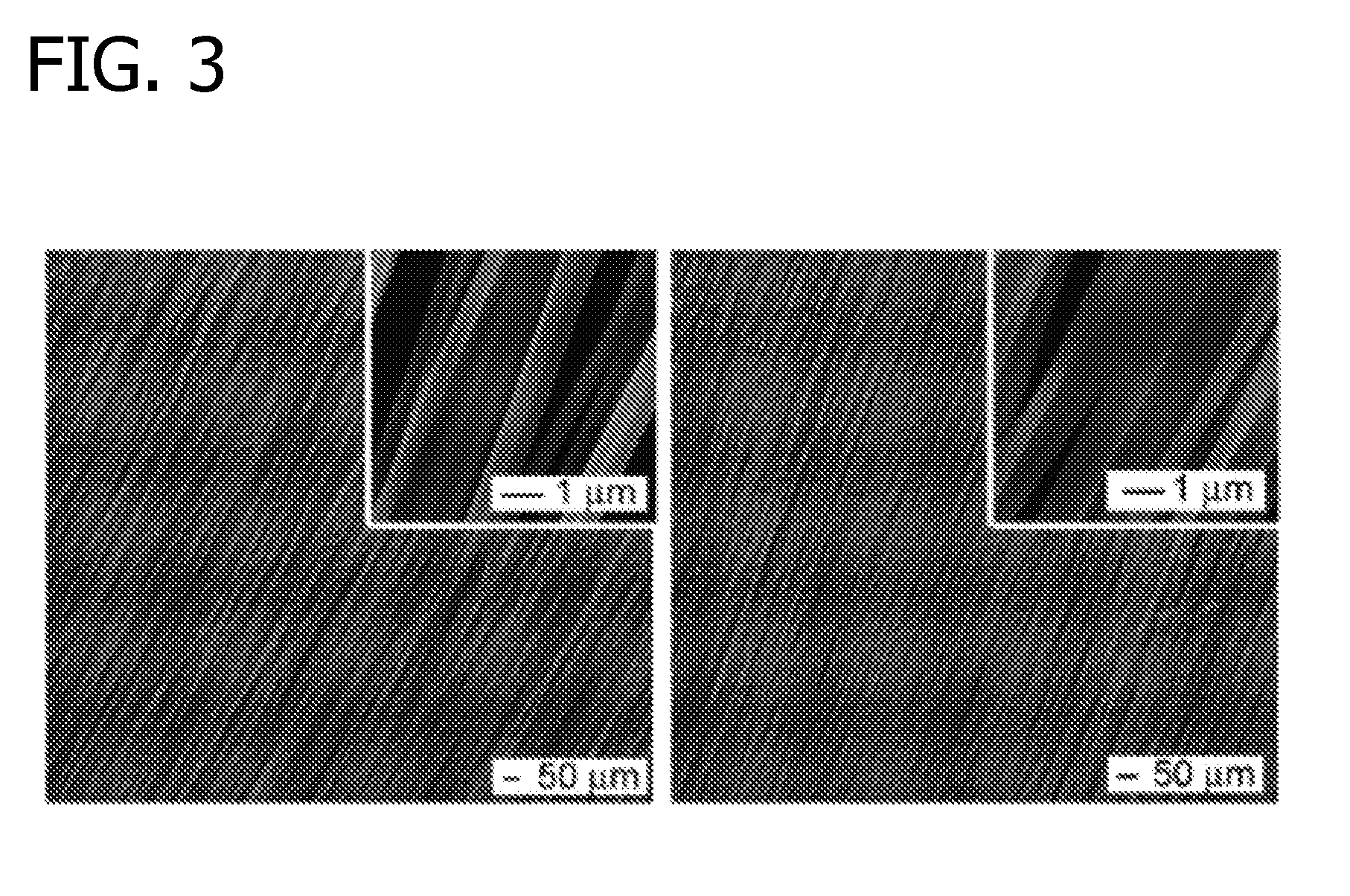Altering protein concentrations in cerebrospinal fluid and/or brain interstitial fluid
a technology of cerebrospinal fluid and interstitial fluid, which is applied in the direction of peptide/protein ingredients, drug compositions, bandages, etc., can solve the problems of tau tangles that interfere with neuronal transport of vesicles, cell death, and no cure for alzheimer's. , the effect of temporary and not universal to all patients
- Summary
- Abstract
- Description
- Claims
- Application Information
AI Technical Summary
Benefits of technology
Problems solved by technology
Method used
Image
Examples
example 1
[0096]In this Example, nanofibrous neprilysin mats are prepared.
Preparation of Electrospun Fiber Mats
[0097]Nanofibers were generated by electrospinning using a setup that was modified from earlier studies (Xie et al., Macromol. Rapid Commun. 29:1775 (2008); Xie et al., Biomaterials 30:354 (2009), which are herein incorporated by reference in their entireties). Poly(ε-caprolactone) (PCL; MW 65,000 g / mol; Sigma-Aldrich, St. Louis, Mo.) was dissolved in a solvent mixture of dichloromethane and N,N-dimethylformamide (Fisher Chemical, Waltham, Mass.) with a ratio 8:2 (v / v) at a concentration of 20% (w / v). Polymer solution was pumped at a flow rate of 0.2 mL / hour using a syringe pump. A DC high voltage of 12 kV was applied between a nozzle (22-gauge needle) and a rotating mandrel covered with an aluminum foil for use as the grounded collector. FIG. 1 shows the electrospinning set up. Fibers deposited on the aluminum foil were peeled off and fiber membranes were treated with air plasma cle...
example 2
[0101]In this Example, neprilysin nanofiber mats were tested for the ability to reduce amyloid beta protein from simulated cerebrospinal fluid (“artificial CSF) in an active flow system.
[0102]Specifically, an artificial cerebrospinal fluid was prepared containing the following: NaCl (124 mM); KCl (2 mM); KH2PO4 (1.25 mM); MgSO4 (0.5 mM); CaCl2 (2 mM); NaHCO3 (26 mM). Amyloid beta protein (1.1 ng / mL) was added to the artificial CSF. A system containing a reservoir connected in series with a peristaltic pump and a canister containing neprilysin nanofiber mats was constructed and flushed with a solution of bovine serum albumin to block amyloid beta interaction with surfaces. 400 mL of the artificial CSF / amyloid beta solution was placed in a reservoir to represent an approximate daily quantity of CSF and amyloid beta production in an adult human. The reservoir was placed on a shake table set to promote uniform concentration of solutes and the pump was set to 180 RPM. Samples were period...
example 3
[0104]In this Example, neprilysin nanofiber mats were tested for the ability to reduce amyloid beta protein from artificial cerebrospinal fluid in a passive system.
[0105]A plastic tube was flushed with a solution of BSA to block nonspecific binding of amyloid beta. The tube was then filled with 50 mL of artificial CSF / amyloid beta, as described above. A 1-inch neprilysin nanofiber mat was inserted into the solution and the tube was placed on a shake table. Samples were periodically collected and analyzed by gel electrophoresis as described above.
[0106]As shown in FIG. 5, the silver-stained gel indicated the strong initial presence of a ˜5 kDa protein, consistent with the molecular weight of amyloid beta, at time 0 that rapidly decreased below detectable concentrations after 2 minutes of fluid incubation. Additionally, bands having molecular weights of 10 kDa, 25 kDa, and 37 kDa, which are believed to be amyloid beta oligomers, also decreased over time. The decreased clearance time o...
PUM
| Property | Measurement | Unit |
|---|---|---|
| Concentration | aaaaa | aaaaa |
| Biodegradability | aaaaa | aaaaa |
| Reduction potential | aaaaa | aaaaa |
Abstract
Description
Claims
Application Information
 Login to View More
Login to View More - R&D
- Intellectual Property
- Life Sciences
- Materials
- Tech Scout
- Unparalleled Data Quality
- Higher Quality Content
- 60% Fewer Hallucinations
Browse by: Latest US Patents, China's latest patents, Technical Efficacy Thesaurus, Application Domain, Technology Topic, Popular Technical Reports.
© 2025 PatSnap. All rights reserved.Legal|Privacy policy|Modern Slavery Act Transparency Statement|Sitemap|About US| Contact US: help@patsnap.com



